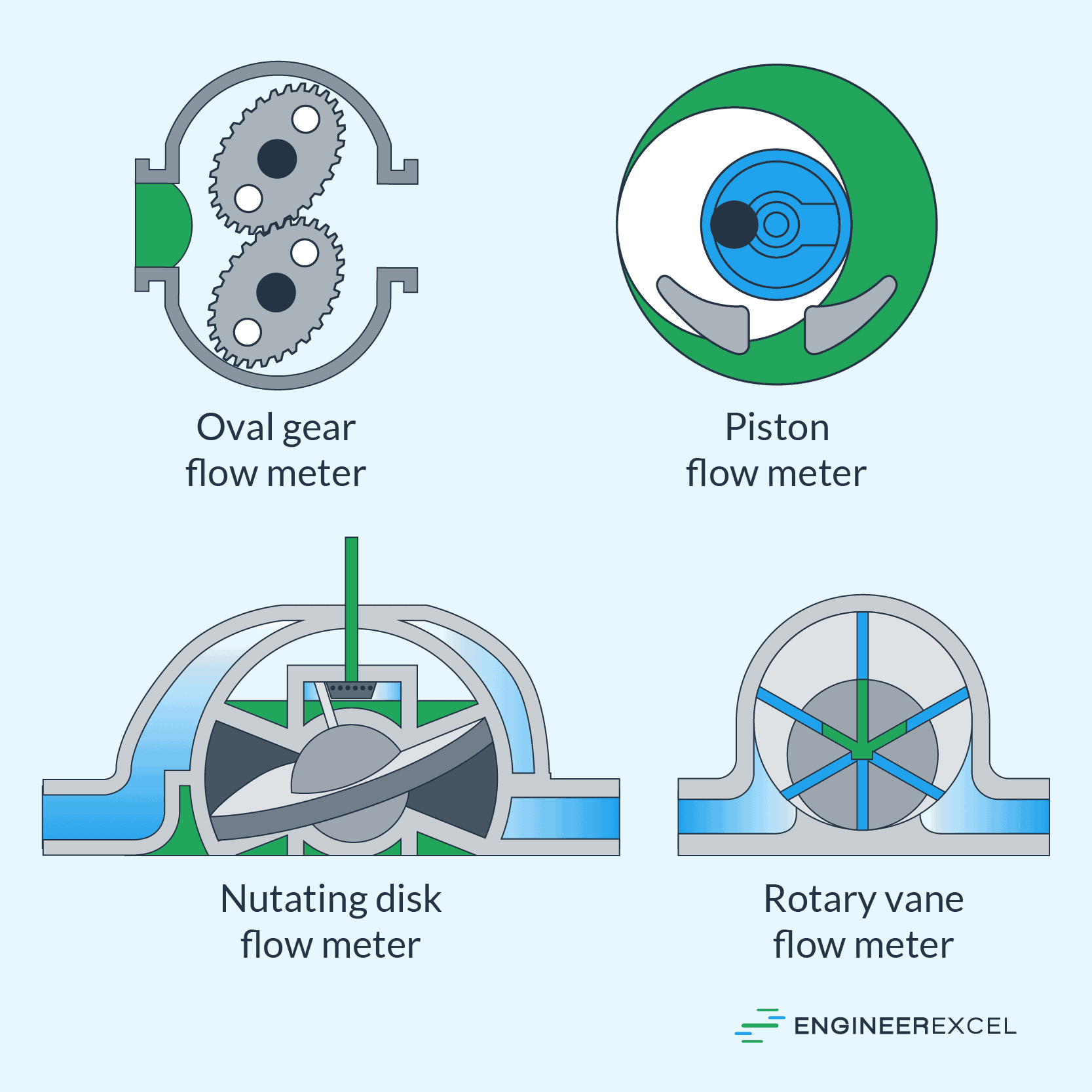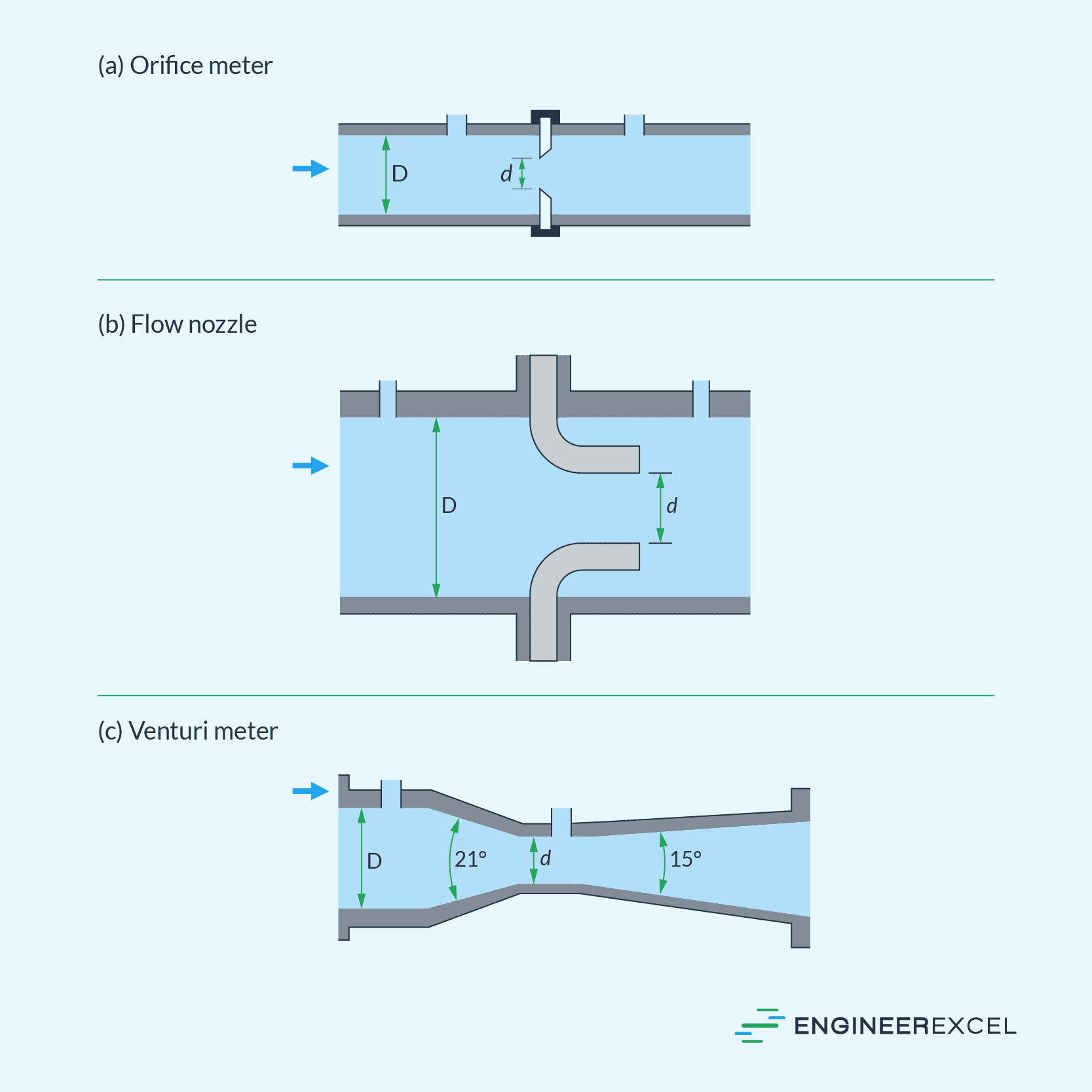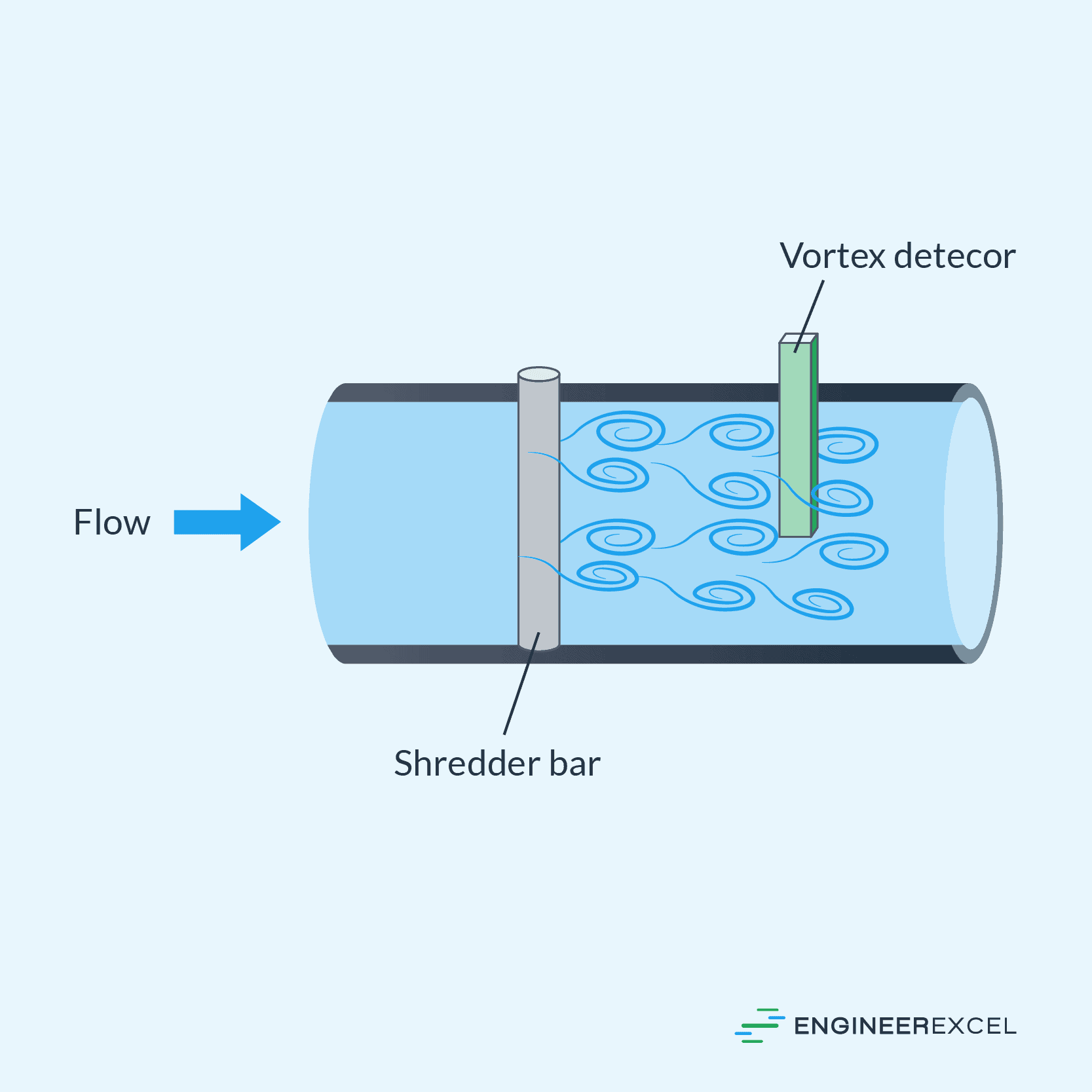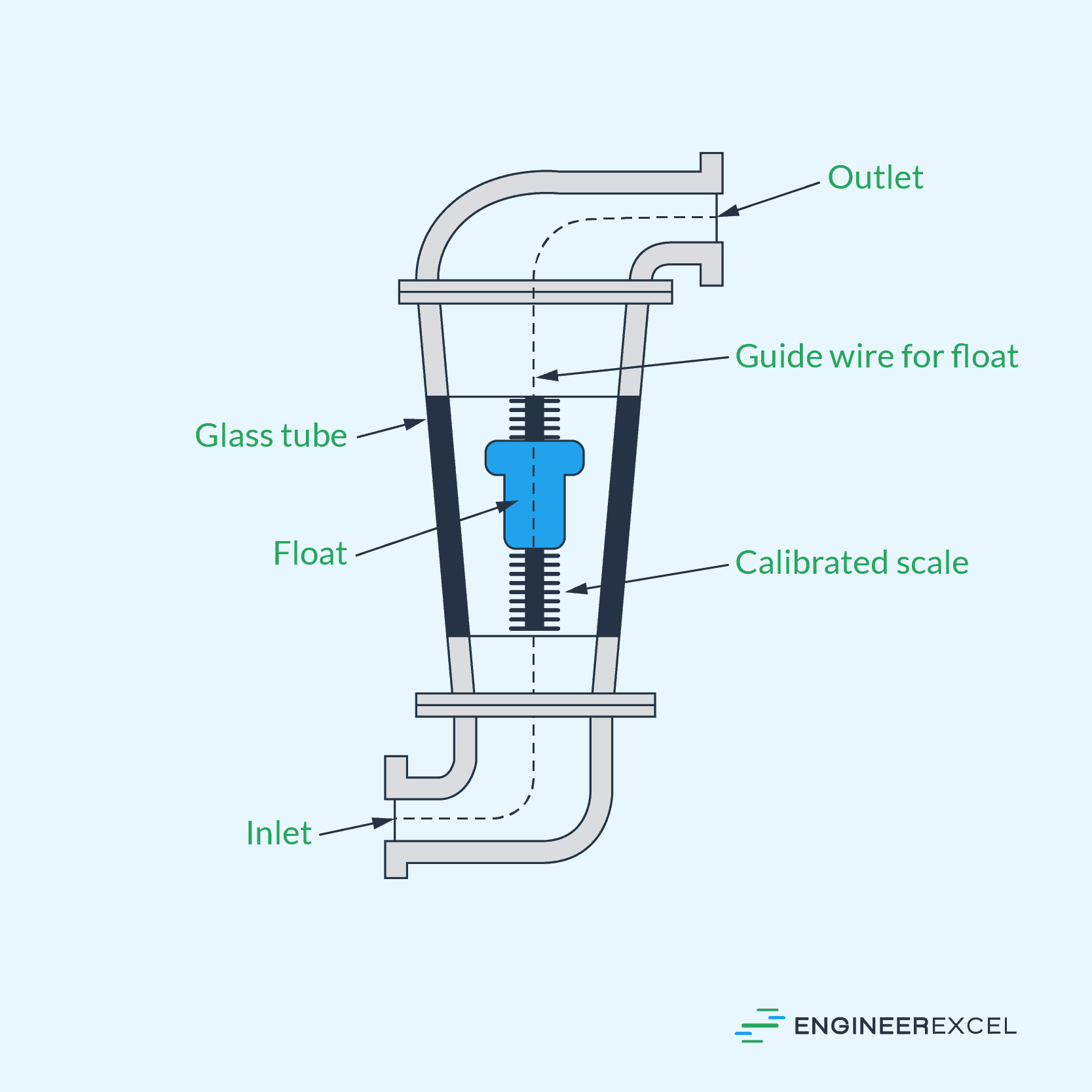Volumetric flow meters are devices used to measure the flow rate of fluids, gases, and steam in terms of volume. There are many types of volumetric flow meters available, with different constructions, operating principles, and advantages.

This article aims to provide guidance on the commonly used types of volumetric flow meters in different applications.
What are Volumetric Flow Meters
Volumetric flow meters are devices that measure the volume of fluid flowing through a system. They are crucial for applications that require precise flow control, such as process industries, water treatment, and pharmaceutical plants.
These meters differ from other types of flow meters like velocity flow meters and mass flow meters. While velocity and mass flow meters measure the fluid’s speed and mass flow rate, respectively, volumetric flow meters focus on the volume of the fluid flowing per unit of time.

Elevate Your Engineering With Excel
Advance in Excel with engineering-focused training that equips you with the skills to streamline projects and accelerate your career.
There are several types of volumetric flow meters, each with unique characteristics and advantages. By understanding the principles and features of each type, you can select the most suitable volumetric flow meter for your application.
Types of Volumetric Flow Meters
Volumetric flow meters can be categorized based on their method of measuring flow. There are several types of volumetric flow meters commonly used, including positive displacement flow meters, obstruction flow meters, turbine flow meters, vortex flow meters, ultrasonic flow meters, electromagnetic flow meters, and rotameters.
Positive Displacement Flow Meters
Positive displacement flow meters measure volumetric flow by allowing a specific quantity of liquid to pass through the meter, then counting each individual volume that passes through. This method provides accurate and consistent measurements.
They are widely applied in measuring both viscous and non-viscous fluids. A few examples of industries using positive displacement flow meters include pulp and paper, oil and gas, and food production.
There are several types of positive displacement flow meters, such as piston, gear, helical, diaphragm, and rotary vane. Each type functions uniquely, but they all share the core principle of measuring flow based on dividing the fluid into distinct volumes. Selecting the appropriate type requires consideration of various factors such as accuracy, viscosity, and pressure requirements.

Reciprocating Pistons
Reciprocating piston flow meters are ideal for liquids with low to moderate viscosity. You’ll find these meters often used in fuel dispensing applications. The meter operates as the fluid pushes the pistons, which rotate a crankshaft, triggering a mechanical counter.
Nutating Disc
The nutating disc flow meter has a disc that wobbles, or nutates, on a spindle as fluid flows. The nutation motion turns a gear train which records the measurement. You’ll find these meters primarily used for metering utility water usage.
Sliding Vanes
When it comes to sliding vane flow meters, a series of spring-loaded vanes slide in and out of pockets within a rotor. As the rotor spins, it displaces the fluid. These meters are popular for transferring high-viscosity fluids such as fuel oils and lubricants.
Gear Impellers
For gear impeller flow meters, fluid is captured in gear teeth as it enters the flow chamber. The gears mesh together, forcing the trapped fluid through the meter. You can use gear impellers in a variety of applications, such as chemical processing and oil and gas transportation.
Reciprocating Bellows
Reciprocating bellows flow meters use an expandable and collapsible bellow to move fluid through the meter. When the bellows expand, fluid is drawn in; when they collapse, the fluid is pushed out. You will find these flow meters in gas metering applications, often used for exotic or corrosive gases.
Obstruction Flow Meters
Obstruction flow meters work by placing an object, or obstruction, in the flow path of the fluid. This creates a pressure differential which is directly proportional to the flow rate. Some common types of obstruction flow meters are orifice plates, Venturi tubes, and flow nozzles.

Orifice Meter
An orifice meter works by placing a thin plate with a hole, called an orifice plate, in the flow path which creates a pressure drop. You can then use the differential pressure across the orifice plate to calculate the fluid flow rate.
Flow Nozzle
The flow nozzle has a smooth, rounded entrance that allows for a more stable flow, which can result in increased accuracy and reduced wear. The flow nozzle is particularly suitable for measuring the flow of high-velocity, non-viscous fluids, like steam.
Venturi Meter
The venturi meter is a highly accurate obstruction flow meter, ideal for measuring the flow of liquids, gases, and steam. It features a specially designed constriction, or venturi, in the flow path that creates a pressure drop. Due to its low permanent pressure loss and non-critical flow profile, the venturi meter is often preferred for large flow or high-pressure applications.
Turbine Flow Meters
Turbine flow meters work by converting the mechanical action of the rotor blades into an electrical signal proportional to the flow rate. These meters are characterized by their ability to provide a high turn-down ratio. They are capable of accurately measuring low or high flow rates.
Vortex Flow Meters
Vortex flow meters operate based on the principle of the von Kármán effect, which involves the formation of vortices behind a bluff body. The bluff body, which is typically a flat plate or a shedder bar, causes disturbances in the flowing fluid, leading to the formation of vortices downstream of the obstruction.

A sensor, usually a piezoelectric crystal or a strain gauge, detects the pressure fluctuations caused by the vortices. The sensor converts the pressure fluctuations into an electrical signal, which is then processed to determine the fluid flow rate.
Ultrasonic Flow Meters
Ultrasonic flow meters measure flow by monitoring the velocity difference created by sound waves propagating in the fluid. These devices are non-invasive and do not require any moving parts. With this technology, you can accurately obtain flow measurements without disrupting the flow of the medium.
There are two main types of ultrasonic flow meters: transit-time and Doppler. Transit-time flow meters measure the difference in time it takes for an ultrasonic signal to travel upstream and downstream in the fluid. On the other hand, Doppler flow meters rely on the frequency shift of the ultrasonic signal caused by particles, bubbles, or other imperfections in the fluid.
Electromagnetic Flow Meters
Electromagnetic flow meters, often called mag meters, utilize Faraday’s law of electromagnetic induction to measure liquid flow. When conductive fluids pass through a magnetic field, a voltage proportional to the flow rate is generated. Your flow meter measures this voltage and converts it into a volumetric flow rate.
These flow meters are suitable for a wide range of applications, including water, wastewater, and chemical industries. Their design allows for minimal pressure drop and low maintenance, as they have no moving parts. Additionally, electromagnetic flow meters are unaffected by fluid density, temperature, or pressure, making them highly accurate and reliable.
Remember, electromagnetic flow meters are not suitable for non-conductive fluids, such as oils and most gases.
Rotameters
A rotameter measures flow by the movement of a float within a conical tube. When fluid passes through the tube, it lifts the float, which indicates the flow rate. The flow rate can be read on a scale, typically found beside the tube.

Constructed with a tapered tube and a movable float, rotameters are simple and reliable. The float’s position is determined by a balance between the upward force of the fluid and the downward force of gravity.
